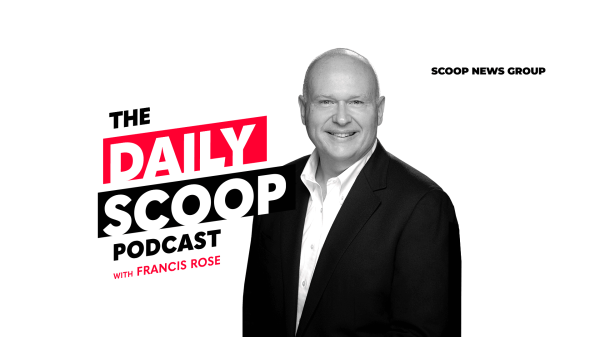
- Sponsored
New category of collaboration tools boost workflow management
As employees across government work from home, collaboration tools are increasingly critical to maintaining productivity.
However, when enabling both productivity and efficiency, there are boundaries to how much you can really gain, and the boundaries are finite, says Chris Aherne, regional vice president of federal sales at Smartsheet in a new podcast. He cites a study from Deloitte showing that digital transformation is “a game of diminishing returns, even as labor productivity is rising.”
“The genesis of collaborative work management tools over the last few years has really favored effectiveness over efficiency in today’s technology saturated enterprise,” he says.
And that’s putting a spotlight on a newer form of enterprise collaboration tools called collaborative work management tools — or CWM — that can help teams get more visibility into how work is getting executed across the enterprise, in this podcast, produced by FedScoop and underwritten by Smartsheet and AWS:
Where CWM tools fit in with existing collaboration tools
Aherne describes the evolution of CWM tools in the context of technology having traditionally evolved in two buckets.
The first bucket is large enterprise or legacy tools, designed for structured work and which makes up about 40% of what the typical knowledge worker would do. These enterprise systems store and manage data about people, customers, finances, et cetera.
The other bucket is unstructured work — things like email, the Office Suite, and other tools designed for users to create, store and discuss their work. This supports the other 60% of work performed at most enterprises.
“At Smartsheet, we like to think of the CWM toolset as a dynamic layer [between the two buckets.] CWM fits into a third bucket where people can align and execute on work in a much more agile way,” Aherne says.
Smartsheet is a cost-effective CWM solution that ties together the other two types of work tools and allows teams and managers to manage their workflows.
How CWM is being used in government
Aherne shares a variety of use cases where CWM tools are playing an increasing role in collaborative work in government.
Smartsheet, for instance, is helping teams work effectively on pre-acquisition processes, contract management and budget tracking, he says. When the government is preparing a procurement package to go into contract, he explains, input will be required from different entities, such as legal, technical and compliance teams.
“Traditionally, this work has been done through email, on spreadsheets and with a lot of meetings,” says Aherne.
Teams are drawn to simple, intuitive tools like Smartsheet, which give them real-time visibility into work execution and status. They appreciate the transparency, visibility and decisions over work planning and the execution both of team members and for managers, he says.
Aherne sees an increasing number of use cases for government application of CWM solutions, such as large, complex development projects, supply chain programs, and security compliance frameworks. He also pointed to work many human resource departments do around workforce planning, hiring and employee development.
CWM is also useful for IT project and portfolio management and for keeping track of compliance and reporting, modernization efforts and low- and no-code application development, he says.
“We actually managed getting our FedRAMP [authority to operate] entirely on Smartsheet. We built the project out and gave access to the GSA, DISA and DHS security review stakeholders to do their reviews of our security posture. It’s probably one of the reasons we were able to complete the process so quickly,” Aherne shares.
Chris Aherne has nearly three decades of industry experience, having led federal business development for BMC Software, Adobe and Mulesoft before joining Smartsheet.
Listen to the podcast for the full conversation on Collaborative Work Management — the emerging category of collaboration tools. You can hear more coverage of “IT Modernization in Government” on our FedScoop radio channels on Apple Podcasts, Spotify, Google Play, Stitcher and TuneIn.
This podcast was produced by FedScoop and underwritten by Smartsheet and AWS.


